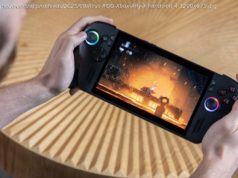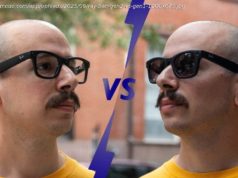Trading has now arrived in Pokémon Go. Find out how to initiate a trade, with whom you can trade Pokémon and which Pokémon you can and can’t trade away.
Trading Pokémon has always been a fundamental part of the franchise, but Pokémon Go notably lacked the feature at launch. Nearly two years since the game came out, however, it’s finally here: Players can now trade with their friends (another system recently added to the game).
Curious as to how trading works? Follow along for the full details — and don’t expect the process to be as simple as you may be used to.
Pokémon is, in its most basic form, a collect-a-thon. The point is to catch ‘em all, but the rub is that it’s impossible to do so without help from your friends. If you have a Pokémon your friend needs for their collection — and vice versa — you can help each other out by connecting and trading the ones you need back and forth.
To be able to trade with another Pokémon Go player, you must first make friends with that trainer. We’ve covered how friendship works in the game extensively, but the TL;DR is that you must send or accept a request to become friends in order to start interacting with other players.
Yep.
Nope. Players must be in close proximity to each other in order to initiate a trade.
The game will alert you when you’re close enough to a friend to be able to trade with them. Once it does, access your Friends List and select the trade option. That will begin the trading process, which includes choosing the Pokémon you’d like to send over to your friend and vetting the one they’d like to send you in return.
You can check out all the details of the Pokémon you’re offered before you agree to the trade. If you’re not feeling it, you don’t have to proceed; you can just cancel out. No Pokémon lost.
You’ll go through a traditional-style trading screen, where you’ll see your Pokémon trade places with your friend’s. Say goodbye to the little dude; you might miss ’em.
The funny thing is that a Pokémon’s stats are scrambled once it’s involved in a trade. Depending on the level of friendship you have with the person you’re trading with, the stats are tweaked to be more or less than (or around the same as) they originally were. This is a good incentive to putting friendship-building near the top of your priorities.
It does. Certain Pokémon can only be traded at higher friendship level.
The higher your level of friendship with someone, the less it costs to actually participate in the trade. Every trade requires spending a certain amount of stardust, which you only have so much of — so it’s good to work on befriending folks, because you’ll want to save up that stardust for the real prizes.
The good news is that the most basic, standard trade only requires spending 100 stardust, which is super doable.
Pokémon Go: Everything you need to know about stardust
These are the stardust discounts you get based on your friendship level:
A Redditor named AshmediaiHel came up with a handy graphic that boils down specific costs and bonuses for each kind of trade. Check that out below.
You can, actually! But legendary trades require extra restrictions, because they’re designated as special trades. There are actually a handful of Pokémon that are classified as special trade-exclusives:
To trade any of these, you’ll need to be at least Great Friends with your partner. These trades also require way more stardust than average ones. That cost will go down if you’re better friends with the person you’re trading with, however.
There are two major restrictions. You can’t trade any mythical monsters, which only includes Mew in the game thus far; and you can’t trade away any Pokémon that you received in a trade. Once your friend gives you one of their Pokémon, it’s yours or it’s no one’s.
Three more quick notes: You must be at least level 10 to trade. Hopefully you’ve reached that by now, since Pokémon Go ’s been out for nearly two years now. The Pokémon you want to trade must be revived. And you have to be at least age 13 in order to trade, for safety reasons.
A Redditor on The Silph Road forum found out that the game won’t let you trade more than 100 Pokémon on a given day. That’s a whole dang lot, so you’ll probably be fine.
In honor of giving away one of your monsters, you’ll get additional candy from a complete trade. The amount is based on the distance between where the trade is taking place and where the Pokémon was caught. So if you caught your Pikachu all the way in London but you live in New York City, you’ll be getting the maximum of three candy.
You can also potentially get a Lucky Pokémon, which you can only receive through exchanging one with a friend.
Lucky Pokémon are those with decreased power-up costs. They require 50 percent less stardust than the average Pokémon in order to level up, which means it’s much easier to make them more competitive.
There’s no way to know whether you have a Lucky Pokémon before you trade it, however. They only become lucky upon a completed exchange. At that point, they’ll have a designation in their profile, and you can also sort for them specifically in your Pokédex.






